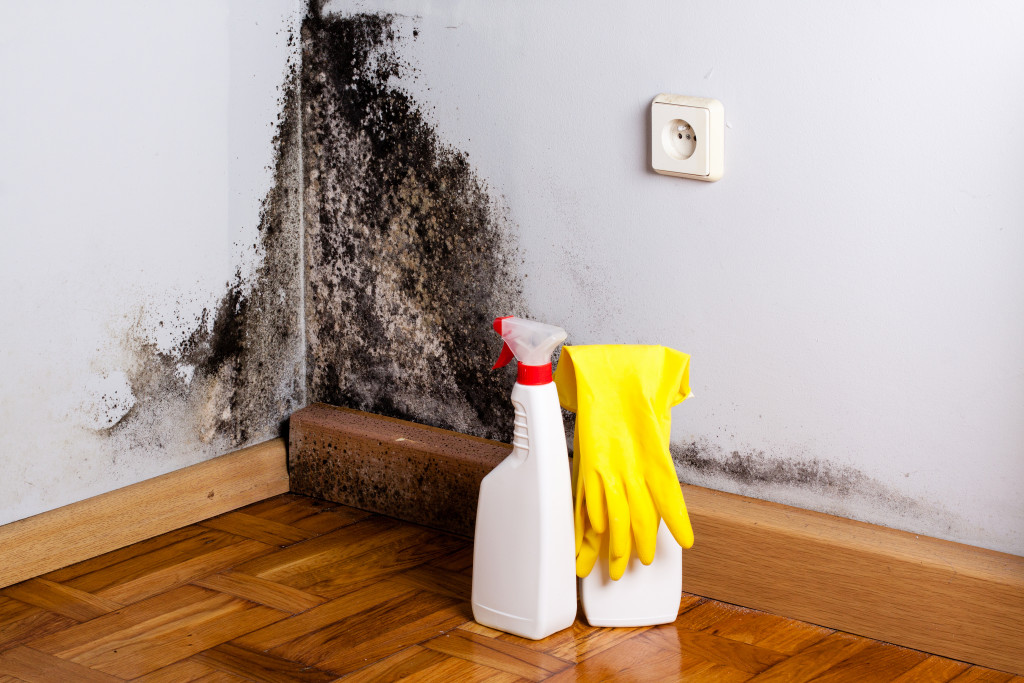- Molds are fungi that thrive in damp environments, reproducing through airborne spores that form colonies
- Entrance of molds into homes is facilitated by moisture, poor ventilation, insufficient insulation, clutter, and delayed repairs.
- Regular inspections are crucial in identifying potential issues that could lead to mold growth, including water leaks and poor ventilation.
- Addressing identified water issues promptly, improving ventilation, and using mold-resistant materials during renovations can prevent mold growth.
- Understanding and addressing the causes of mold growth can help maintain a mold-free and healthier home environment.
Mold is a problem that many homeowners face, and it can be a difficult issue to resolve. It can cause health problems for you and your family, and it can also damage your home. But what causes mold to grow? Here’s a look into what molds are, how they get into your home, and ways you can renovate your home to be resilient against molds.
What Are Molds?
Molds are a type of fungi that grow in damp and humid environments. They can come in various colors, including black, green, white, or orange. Molds reproduce through tiny spores that become airborne when disturbed. These spores can land on surfaces and grow into new mold colonies.
How Do Molds Enter Your Home?
Molds can enter and grow in your home in various ways. Here are some of those ways:

1. Moisture
Mold needs moisture to grow, so one of the most common reasons for mold growth in homes is excess moisture. Various reasons, such as water leaks, high humidity levels, condensation, and poor ventilation can cause this. If you notice any signs of moisture, addressing the issue immediately is essential to prevent mold growth.
2. Poor Ventilation
Good ventilation is important for keeping the air in your home fresh and dry. When there isn’t enough ventilation, it can lead to high humidity levels, creating an environment perfect for mold. Ensure your home is adequately ventilated, especially in areas like the bathroom, kitchen, and basement. Make sure that your ventilation is up to date by asking a professional to check it.
3. Poor Insulation
Poor insulation can also lead to mold growth. When there isn’t enough insulation in your walls, it can lead to condensation, creating a damp environment perfect for mold. Ensure your home is properly insulated, and add insulation where necessary.
4. Clutter
Having clutter in your home can also contribute to mold growth. Clutter can prevent proper ventilation and trap moisture, creating an environment where mold can thrive. Keeping your home clutter-free can help prevent mold growth.
5. Delayed Repairs
If you notice a leak or other water damage in your home, you must address it as soon as possible. Delaying repairs can lead to mold growth, as excess moisture creates a perfect mold environment. If you’re unsure how to address a water issue in your home, it’s essential to call a professional for help.
Home Renovations to Prevent Mold
You can do various home renovations to prevent mold growth in your home. Here are some ideas:
Get Your Home Inspected
Getting your home inspected is one of the most necessary renovations to prevent mold growth. A professional inspector can identify potential issues, such as water leaks or poor ventilation, that could lead to mold growth. They can also provide recommendations on how to address these issues. Also, getting a reliable infrared drone roof inspection might be better. The infrared can help check any hidden damage the naked eye can’t see. It can also find damage on your roof that can lead to leaks, resulting in mold growth.

Fix Water Issues
If an inspection reveals any water issues in your home, it’s essential to address them immediately. This could include fixing leaks, improving drainage, or installing a dehumidifier. By fixing these issues, you can prevent excess moisture and create a less favorable environment for mold.
Improve Ventilation
Proper ventilation is crucial in preventing mold growth. Consider installing exhaust fans in high-humidity areas, such as the bathroom and kitchen. You can also open windows to improve air circulation and reduce moisture.
Use Mold-Resistant Materials
Consider using mold-resistant materials such as drywall, paint, and flooring when renovating your home. These materials are designed to resist mold growth and can be beneficial in preventing future mold issues.
Mold is a common problem that can seriously affect your health and home. Understanding what causes mold growth and taking preventative measures can protect your home from this pesky fungi. Consider regularly inspecting your home and making necessary renovations to create a more resilient, mold-free living space. So, when it comes to your home, always prioritize mold prevention.
